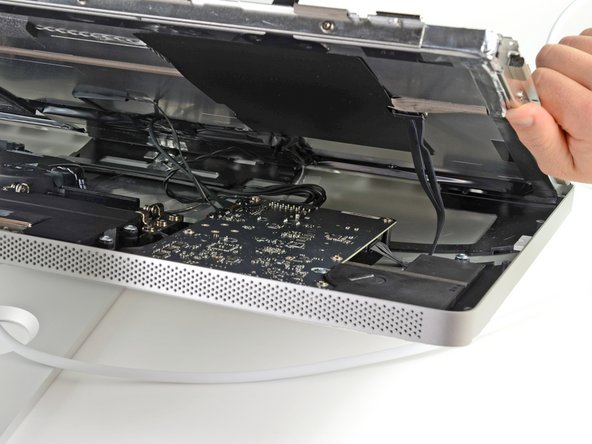
We got the warm fuzzies when we found out that no proprietary tools were required to dissect Apple’s colossal display. In fact, all you really need to pull the guts out of this machine are some heavy duty suction cups, Torx T6 and T10 screwdrivers, and maybe a spudger here and there.
All in all, we were struck by the Thunderbolt Display’s ease of disassembly, and its 8 out of 10 repairability score reflects our admiration. But what did we find inside? Lots and lots of goodies that usually don’t come standard with an LCD monitor. Although monitors usually don’t cost as much as a laptop, either.
Teardown highlights:
- The LG display found inside is model number LM270WQ1. It’s the same display found in the iMac Intel 27″ from October of 2009, as well as the same basic LG display found in Dell’s competing 27″ monitor—though the Apple version uses LED backlights as opposed to Dell’s traditional CCFL. Dell’s version is also matte, something that lots of Mac users have been complaining about since the old 30″ Cinema Display was discontinued.
- The 27-inch (diagonal) TFT active-matrix LCD has a resolution of 2560 by 1440 pixels, the standard for displays of this size and price. Its 12 ms response time and 16.7 million colors, however, fall short of the 6 ms response time and 1.07 billion colors of Dell’s comparable display. We might be splitting hairs here, but those hairs would be viewed with 1,053,300,000 less colors on Apple’s display. Just saying.
- The fan is easily removed simply by detaching a couple of connectors and unfastening a few screws. Apple has, as usual, chosen to go with a large, brushless fan to keep the colossal Thunderbolt Display cool and quiet.
- Interestingly enough, the Thunderbolt cable that routes into the display also plugs into a standard Thunderbolt socket on the logic board. Apple could have just soldered the cable wires to the board, but instead chose to implement a cover that prevents the cable from being detached from the logic board’s Thunderbolt socket.
- Both sides of the logic board are packed with enough chips that it’s hard to believe there’s no computer inside this display. Standouts include:
- Pericom PI7C9X440SL PCIe-to-USB 2.0 host controller
- L129NB11 EFL, which looks to be the Thunderbolt port controller
- Analog Devices ADAV4601 audio processor
- NXP LPC2144 USB 2.0 microcontroller
- Delta LFE9249 10/100/1000 Base-T LAN filter
- SMSC USB2517-JZX USB 2.0 hub controller
- Maxim MAX9736B Mono/Stereo high-power Class D amplifier
- LSI L-FW643E-2 open host controller interface
- Broadcom BCM57761 Gigabit ethernet controller
- Supertex HV9982 3-channel switch-mode LED driver IC
- We found some massive speaker enclosures near the side edges of the Thunderbolt Display and eagerly removed the screws holding them in place. Turns out the Thunderbolt Display comes with a 49 Watt 2-speaker sound system, including a miniature subwoofer.
- We made quick work of the few screws and connectors that held the Flextronics power supply in place and found that this puppy provides 250 watts of maximum continuous power!







0 Commenti